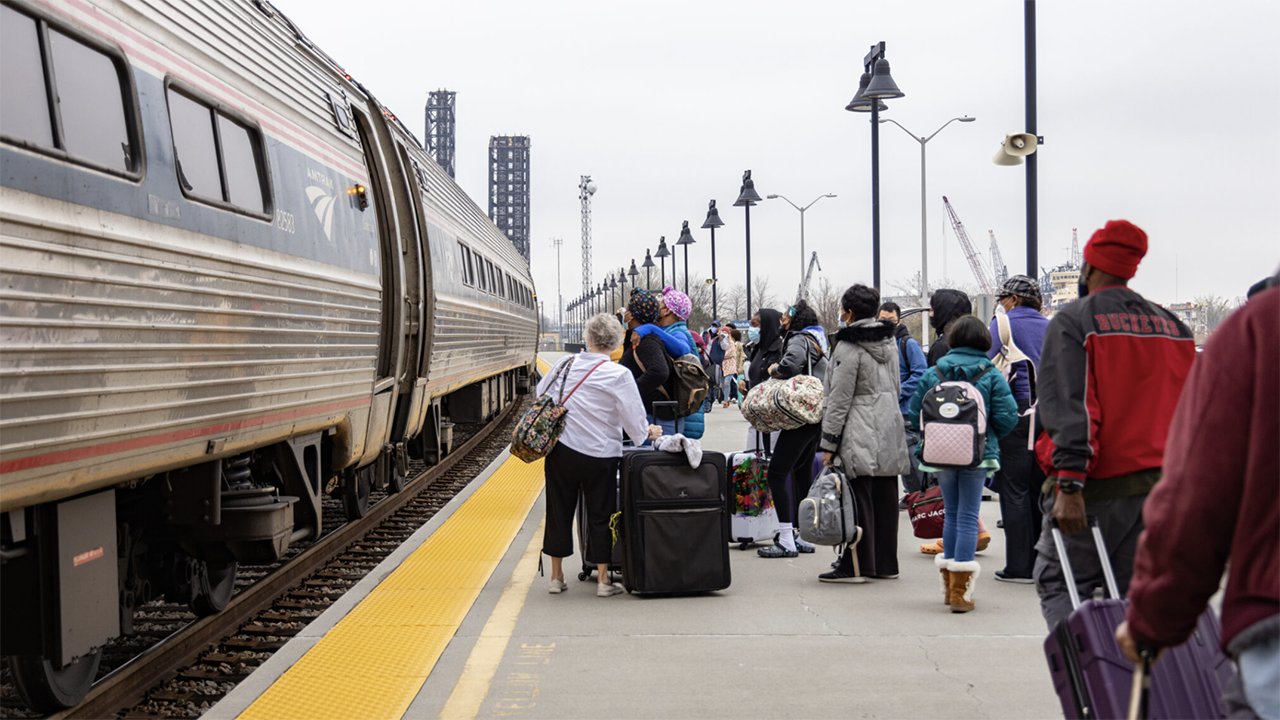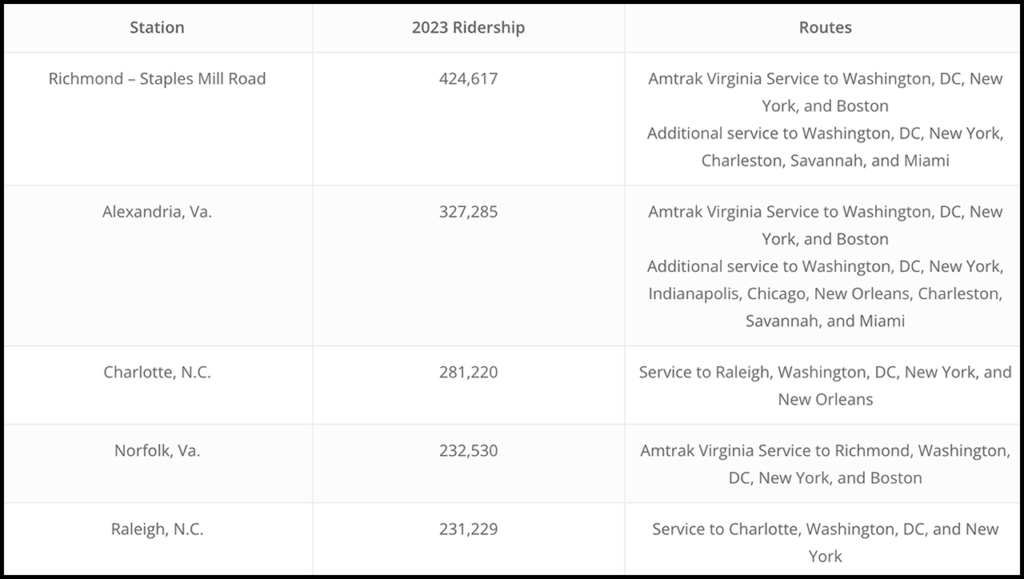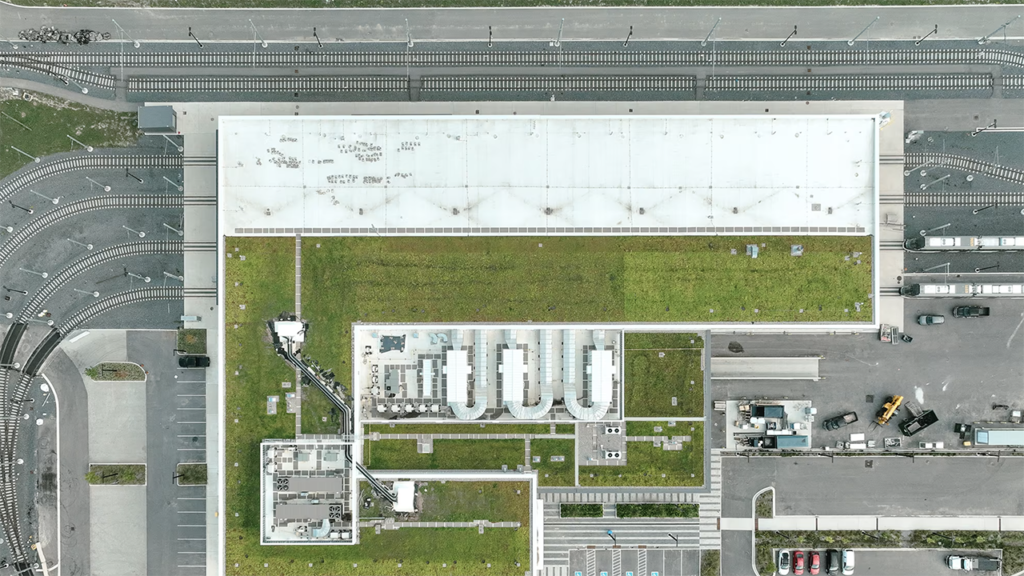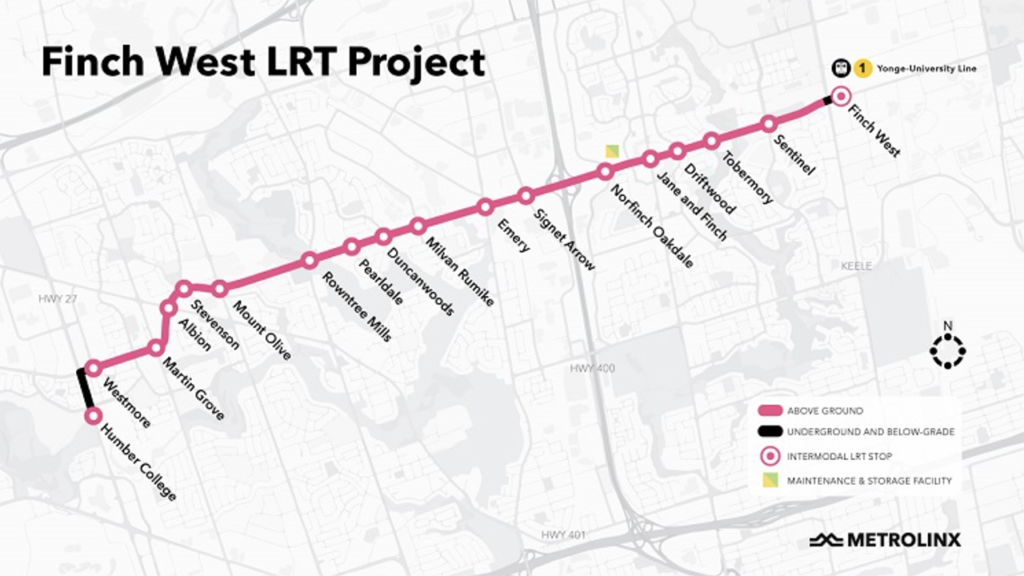
Transit Briefs: Amtrak, NYMTA, Metrolinx
Written by Marybeth Luczak, Executive Editor
“The tremendous growth in ridership is a result of the substantial investments North Carolina and Virginia are making to expand and improve passenger rail,” Amtrak Vice President Ray Lang said on Feb. 28. “Customers are taking advantage of a sustainable way to travel to the many destinations our network offers.” (Amtrak Photograph)
Virginia and North Carolina are home Amtrak’s busiest stations in the Southeast. Also, the Kansas Department of Transportation (KDOT) provides an update on expanding Amtrak’s Heartland Flyer; New York Metropolitan Transportation Authority’s (MTA) Chief Accessibility Officer earns Presidential Volunteer Award; and Metrolinx’s maintenance and storage facility for the Finch West LRT project in Toronto receives LEED Silver Certification.
Amtrak

Amtrak on Feb. 28 reported that more people are traveling on its trains, with a record number stopping in Virginia and North Carolina. Last year, the top five stations in the Southeast were the Staples Mill Road Station in Richmond, Va.; and the Alexandria, Va.; Charlotte, N.C.; Norfolk, Va.; and Raleigh, N.C. stations (see above).
Amtrak Virginia, the Virginia state-supported intercity passenger rail service, offers 12 daily trains to the Richmond station for service to Washington, D.C.; Baltimore, Md.; New York, N.Y.; and Boston, Mass. Riders can also access additional Amtrak service for travel to Raleigh; Charlotte; Savannah, Ga.; and other cities as far south as Miami, Fla.
In addition to Richmond, Alexandria, and Norfolk, Amtrak Virginia also serves Newport News, Roanoke, and 12 other Virginia communities. In 2023, the service set a ridership record of more than 1.3 million passengers, Amtrak said, making the commonwealth one of the most popular travel destinations on the Amtrak national network.
Additionally, plans are under way to expand Amtrak Virginia service through Virginia Passenger Rail Authority’s (VPRA) Transforming Rail in Virginia initiative, resulting in two additional roundtrips in 2026 and three in 2030.
“Richmond is not just the capital of Virginia, it’s the epicenter of the East, connecting the Southeast and the Northeast by rail,” said DJ Stadtler, Executive Director of VPRA, which oversees the commonwealth’s Amtrak Virginia service. “All three of these stations—Richmond-Staples Mill, Alexandria, and Norfolk—[on the list of Amtrak’s top five in the Southeast] offer Virginians access to rail service connecting the commonwealth with the rest of the East Coast.”
In North Carolina, the Piedmont and Carolinian services offer daily roundtrips for travel between Raleigh, Charlotte, and points in between. The Piedmont and Carolinian, which travels daily from New York to Charlotte, and stops at the Staples Mill Road Station in Richmond, and Alexandria, Va., are sponsored by the North Carolina Department of Transportation (NCDOT) and operated by Amtrak.
“The growth we’ve seen in ridership in 2022 and 2023 is unprecedented,” NCDOT Rail Division Director Jason Orthner said. “Continuing to work in partnership with Amtrak and the VPRA to increase connections and decrease travel time between destinations in the South and the Northeast is a priority to increase and enhance NC By Train service in North Carolina and beyond.”
In a related development, a recently released NCDOT report finds that North Carolina’s passenger and freight rail system contributes more than $20 billion to the state economy and supports 88,000 jobs.
KDOT
KDOT has released public comments on its proposal to expand Amtrak’s Heartland Flyer from Oklahoma City through Wichita and up to Newton, where it would link with Amtrak’s Southwest Chief, which has multiple stops in Kansas and connects Los Angeles and Chicago, KSNW-TV reported Feb. 28.
The proposed corridor would include new station stops in Edmond, Perry, and Ponca City, Okla., and Arkansas City, Wichita, and Newton, Kan.
According to KSNW-TV, the Department received more than 400 comments on the proposal during a virtual public meeting held last November; the majority were positive. “Supporters also wanted to see passenger rail service expand further north of Newton, connecting other communities, like Manhattan, as well as Lawrence and Kansas City, which are connected by the Southwest Chief,” the media outlet reported. They also sought “improved amenities, updated train stations, handicap accessibility improvements, and connections to bus routes and airports.”
The Federal Railroad Administration in December selected the expansion project for its Corridor Identification and Development Program. KDOT, as corridor sponsor, received a $500,000 grant to develop a scope, schedule, and cost estimate for preparing, completing, or documenting its service development plan.
According KSNW-TV, KDOT said a service development plan will be completed later this year; if the proposal is successful, service could begin by 2029.
MTA

As the New York State Senate commemorated the 180th anniversary of Dominican Independence on Feb. 27, State Senator Luis Sepúlveda honored Quemuel Arroyo, MTA Chief Accessibility Officer, “for his dedication, leadership and invaluable contributions to New Yorkers as a Dominican-American advocate for the disability community,” according to the MTA.
Arroyo was also presented with the Presidential Volunteer Award Medal “for his exceptional volunteer work in the community, particularly in service to people with disabilities and underserved communities,” the transit agency reported. The award, which is bestowed by the President of the United States, “recognizes the role of volunteers in America’s strength and national identity, honors individuals whose service positively impacts communities, and inspires those around them to take action,” the agency said.
“I am honored to have been recognized in Albany and represent the thousands of Dominicans that have contributed to the social fabric and dynamism of New York, whether in political engagement, advocacy, culture, food, or other endeavors,” MTA Chief Accessibility Officer Quemuel Arroyo said. “My dedication and drive stems from the heart of the Dominican community, which has shaped me into who I am today, and I will continue be a voice and advocate for all New Yorkers to build a transit system that’s accessible and inclusive for everyone.”
“Mr. Arroyo has distinguished himself as a trailblazer, an advocate for accessibility in our city,” State Senator Luis R. Sepúlveda said. “In February of 2021, he assumed the role of the MTA’s first agency-wide Chief Accessibility Officer, championing inclusivity and equal access to transportation for all New Yorkers. Mr. Arroyo’s story is emblematic of the countless ways in which Dominicans make New York a better place each day. His dedication, leadership, and unwavering commitment to service serves as a beacon of inspiration to all of us.”
Metrolinx

The Finch West Light Rail Transit (LRT) project’s maintenance and storage facility has earned LEED Silver Certification, according to Metrolinx.
Awarded through the Canada Green Building Council, this certification “is an international symbol of sustainability excellence and green building leadership,” Metrolinx said, and “provides a framework for healthy, highly efficient, and cost-saving green buildings, which offer environmental, social and governance benefits.”
According to the agency of the Ontario government, the maintenance facility has a “green” roof, where plants like Summer Glory, Blue Spruce and Coccineum are growing. These small hardy plants are drought resistant, it said. The roof is laid out in a series of rectangles, separated by pathways without plants for maintenance crews to safely walk around it.
What are the benefits of a green roof? “Everything from air purification, reducing urban heat island effects, reduced energy costs, and increased urban biodiversity,” Metrolinx reported. “The green roof also mitigates stormwater runoff by retaining water and gradually releasing it later.” It has also become a home and nesting area for Eastern Meadowlark and Killdeer birds.
There are numerous features on both the interior and exterior of Finch West LRT’s maintenance and storage facility that helped earn the building’s LEED certification, according to Metrolinx. Among them:
- The building was constructed using recycled and renewable materials, as well as certified wood.
- Low-emitting materials such as paints, coatings, adhesives, sealants, and flooring systems were implemented.
- The facility features innovative technologies that contribute to water efficiency and reduction, according to the agency.
- The building’s exterior features parking-area charging stations, bike racks, and landscaping, including a wide variety of trees like Red and Silver Maples, Red Oak, and White Spruce, as well as Dogwood, Sumac and Arrowwood shrubs.
The facility is located at 50 York Gate Boulevard, just west of Jane & Finch on the north side of Finch Avenue West (see map below).

The 6.5-mile (10.3-kilometer), 18-stop Finch West LRT line will run along Finch Avenue West from Keele Street to Highway 27, where it will turn, then travel south to the Humber College north campus. It will include connections with other Toronto Transit Commission (TTC) lines, as well as links to Peel and York Region local transit services.
The Finch West LRT will run primarily at street level in dedicated lanes down the center of Finch Avenue West. LRVs will enter and exit the two underground stations on either end of the line (Humber College Station and Finch West Station) through portals, long ramps that create a shallow grade allowing vehicles to safely transfer between the stations and the surface.
The Finch West LRT’s rolling stock will consist of 18 Alstom Citadis Spirit LRVs. These low-floor LRVs can carry up to 336 passengers.
The project will cost C$2.5 billion, which includes both construction and a 30-year maintenance contract for the LRT and the vehicles. Metrolinx and Infrastructure Ontario are the project owners and contracted a private-sector partner, Mosaic Transit Group, to lead construction and maintenance on the line. The Finch West LRT will be operated by the TTC.
Major construction began in 2019, with the first active work sites at the Maintenance and Storage Facility site and at Finch and Highway 400. Finch West LRT is expected to open in late 2024.



